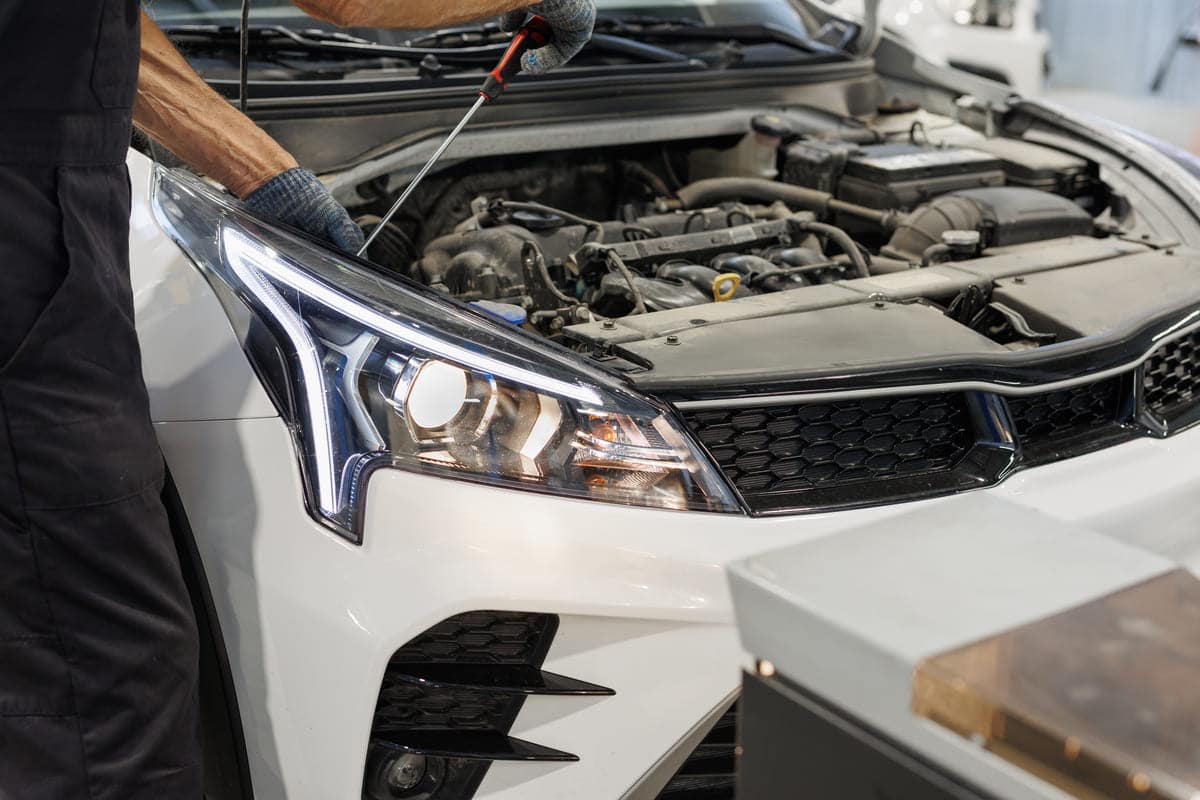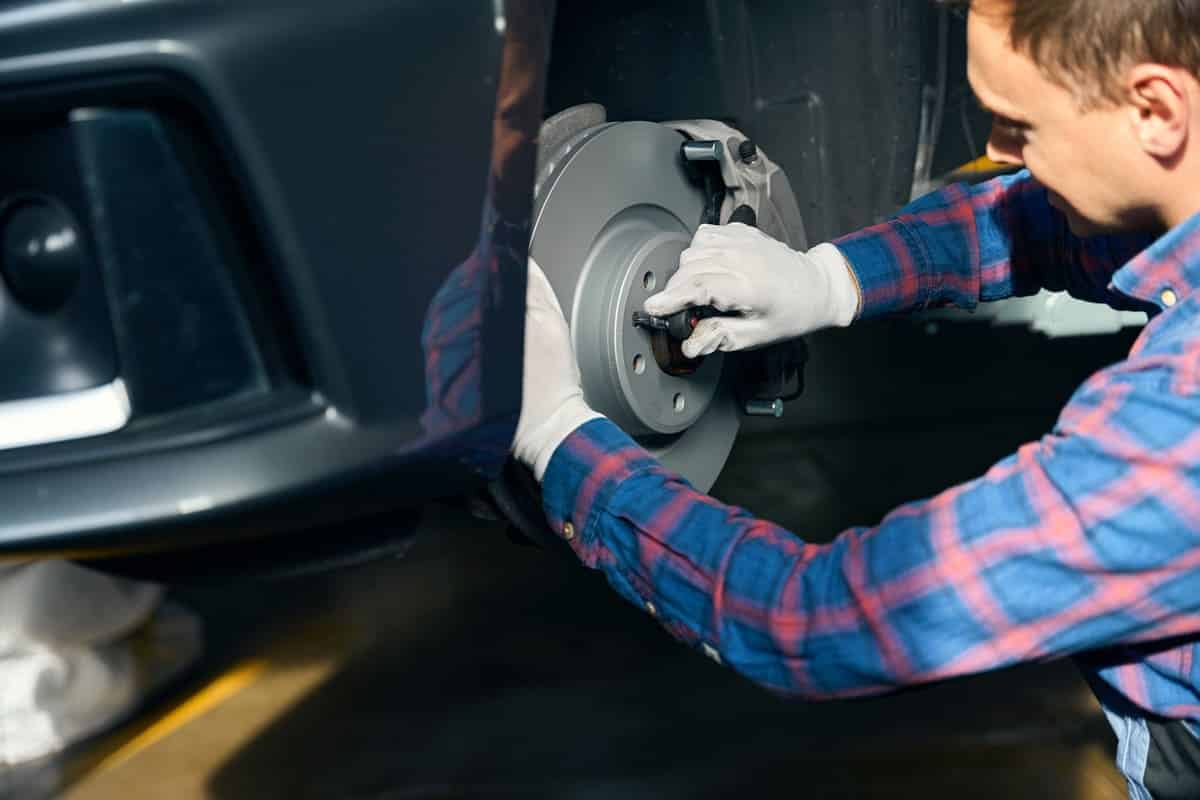
7 Signs Its Time to Replace Your Vehicle Brakes
Is your car struggling to stop as quickly as it used to?
That slight squeal, a pulsing pedal, or a longer stopping distance could mean your brakes are wearing out. Brakes are one of your vehicle’s most essential features, and neglecting their condition can put you and others at risk on the road.
Imagine hitting the brakes in an emergency, only to find your car takes longer to stop than you expected. It’s a situation no driver wants to experience. Brake issues often start subtly, but as wear progresses, these signs can become dangerous.
Understanding the signs of worn-out brakes isn’t just for auto enthusiasts. Knowing when it’s time to replace them can help you avoid unexpected breakdowns and keep your vehicle safe and reliable. And the good news? Recognizing these signs early means you can address them before they become costly or hazardous.
This blog post will walk you through each one, plus share preventive care tips to keep your brakes in top shape. Let’s dive in and make sure you’re prepared to handle any brake issue that comes your way.
Why Does Your Vehicle Brake Health Matter?
Brakes play a key role in keeping you safe on the road. Worn or damaged brakes make your car less responsive, increasing the risk of accidents. Even small issues with your brakes can turn into major safety hazards if left unattended, which is why staying on top of is critical.
Safety First
Driving with worn brakes can lengthen stopping distances, especially in sudden stops. This delay could mean the difference between avoiding or hitting an obstacle. A study by the National Highway Traffic Safety Administration (NHTSA) found that faulty brakes contribute to around 22% of car accidents caused by vehicle-related issues. When brakes are healthy, you’re better equipped to handle sudden stops and maintain control.
References
- National Highway Traffic Safety Administration (NHTSA). NHTSA. Retrieved from on 11 November 2024.
Save Money by Preventing Major Repairs
Ignoring early signs of brake wear can lead to expensive repairs down the line. For instance, letting brake pads wear down too far can damage the rotors, a repair that could cost several hundred dollars. Replacing brake pads regularly is far cheaper than waiting until rotors or other brake components need replacement.
Longer-Lasting Brake System
Regular brake checks not only keep you safe but also extend the life of your braking system. Timely maintenance allows for small adjustments, which keep your brakes working efficiently and help you avoid more significant wear and tear.
Improved Fuel Efficiency
Surprisingly, healthy brakes can even boost . Worn-out brakes can cause unnecessary drag, making your car work harder and use more fuel. Addressing brake issues can improve your car’s overall performance, saving money on gas and reducing wear on other parts of the car.
Is It Time to Replace Your Brakes?
When was the last time you thought about your vehicle’s brakes? While brakes often go unnoticed until something feels off, they’re one of the most crucial parts of your car’s safety system. Neglecting brake health can lead to expensive repairs and, more importantly, put you and others at risk on the road.
Knowing the early warning signs of brake wear can help you avoid costly damage and stay safe. Here are 7 signs that it’s time to consider a brake replacement.
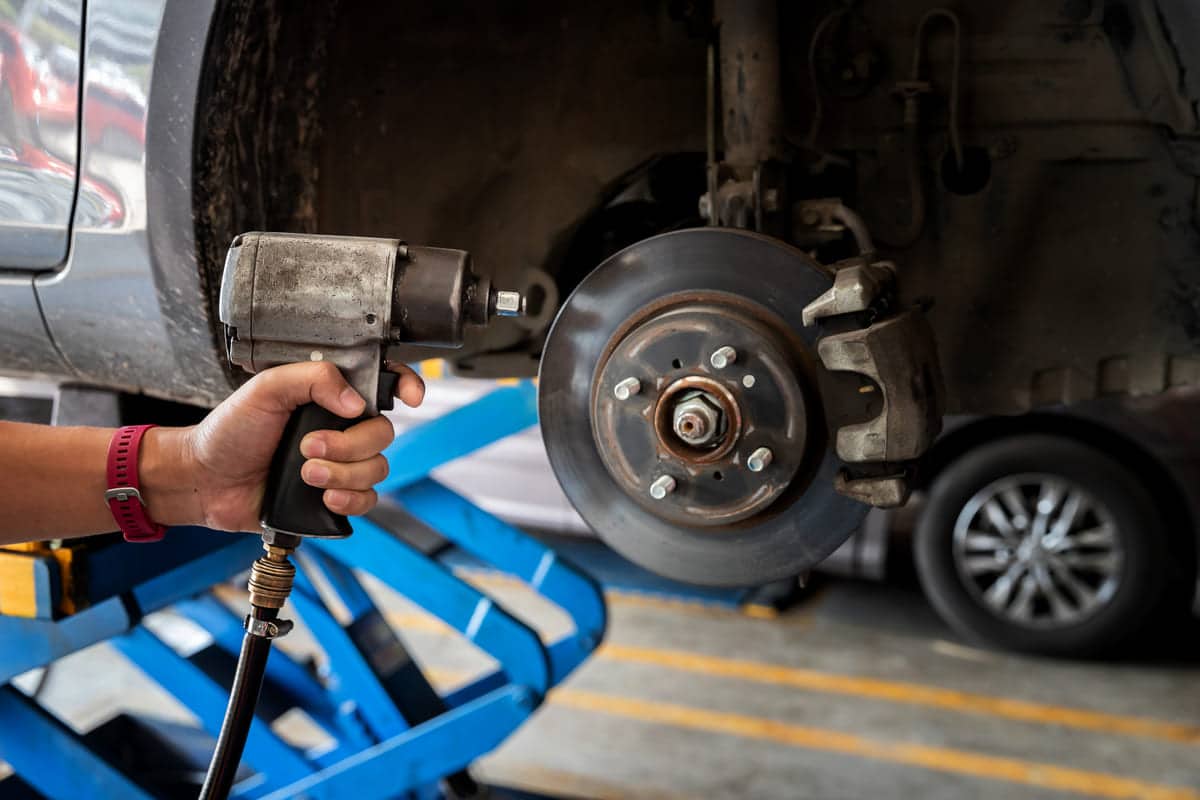
Sign #1: Unusual Sounds While Braking
When you hear unusual sounds like squeaking or grinding while braking, it often signals a brake issue. These sounds are more than just minor annoyances – they are warnings that your brake components may be wearing down or facing other mechanical issues.
Common Causes of Unusual Sounds
- Squeaking or Squealing: This sound often comes from worn brake pads. Manufacturers include a small metal indicator in pads to create this noise as a signal for replacement. Lack of lubrication between brake components can also cause squeaks.
- Grinding: Grinding is a serious red flag. It means the brake pads have likely worn down entirely, allowing the metal backing to scrape against the rotor. This can cause significant damage and may require costly repairs.
What to Do If You Hear These Sounds
- Inspect for Wear: If you hear a squeak, inspect the brake pads for wear. Most pads should be replaced before they reach 3mm in thickness.
- Listen to Grinding: Grinding means immediate action. Continuing to drive can damage the rotors, leading to an even more expensive repair.
- Get a Professional Inspection: A mechanic can assess the source of the noise, apply lubrication where needed, or recommend replacements.
Sign #2: Vibrations When Braking
If you feel vibrations in the brake pedal or steering while braking, it could be a sign of warped rotors or misaligned brake components. These vibrations indicate that something isn’t balanced in your brake system, often pointing to an issue needing attention.
Types of Vibrations and Their Meanings
- Pedal Vibrations: If your brake pedal vibrates, it often signals warped rotors. Warping happens when rotors experience uneven wear or heat buildup, causing them to lose their flat, even surface. This can make braking feel uneven and affect performance.
- Vibrations: When the steering wheel vibrates while braking, it typically indicates issues with the front rotors or misaligned brake components.
Causes of Brake Vibrations
- Warped Rotors: High heat from continuous or aggressive braking can warp rotors. Warping creates an uneven surface, leading to vibrations.
- Loose or Worn Components: Brake vibrations can also result from loose or misaligned components within the braking system.
When to Seek Help
- Persistent Vibrations: If vibrations persist, have a mechanic inspect the rotors and other components.
- Noticeable Brake Fade: If braking feels weaker with vibrations, it’s best to address the issue promptly to avoid more significant wear.
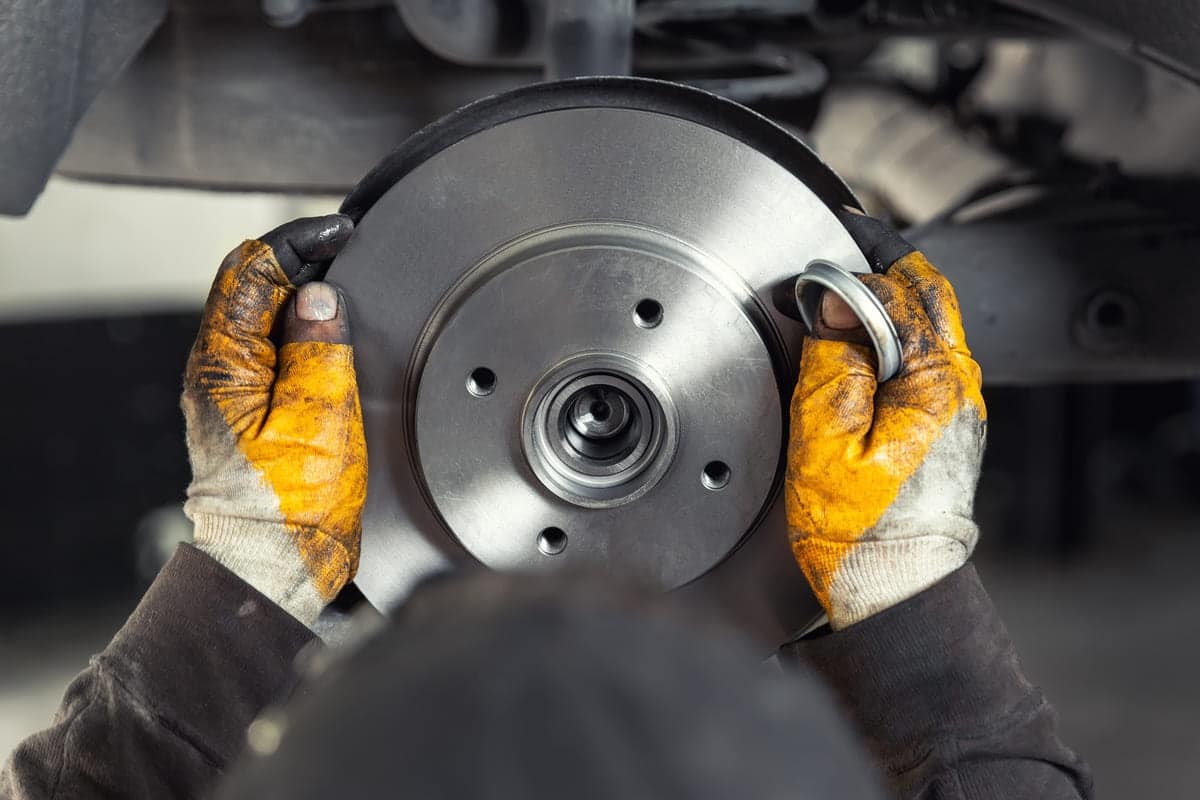
Sign #3: Longer Stopping Distances
If your vehicle requires more time and distance to stop, it could indicate a decline in braking efficiency. This change means the brake system is not performing as well as it should, increasing the risk of accidents in sudden-stop situations.
Factors Affecting Stopping Distance
- Worn Brake Pads: As brake pads wear down, they provide less friction, resulting in longer stopping distances.
- Issues: Low or contaminated brake fluid can affect hydraulic pressure, reducing braking power.
- Rotor Condition: Warped or damaged rotors lead to less effective braking, impacting the time and space it takes for your car to stop.
How to Evaluate Changes in Stopping Distance?
- Compare Past Performance: Think back to when you last noticed changes in your braking distance. If you observe increased time to stop, this may require a brake system check.
- Monitor in Safe Conditions: Test braking distances in a safe, open space. Notice if the vehicle takes longer than expected to halt.
If stopping distances continue to increase, consult a professional. Worn brakes not only raise safety risks but can also lead to more extensive repairs if neglected.
Sign #4: Brake Warning Light is On
When the brake warning light appears on your , it’s a sign your vehicle’s brake system needs attention. This light serves as an alert, varying by vehicle model, indicating potential issues that could impact your braking safety.
Common Reasons the Brake Light Activates
- Low Brake Fluid: Brake fluid helps transmit the force needed for braking. If levels drop too low, it can trigger the warning light, alerting you to refill.
- (Anti-lock Braking System) Issues: Problems with the ABS, such as sensor malfunctions or electrical faults, can cause the brake warning light to illuminate.
- Worn Brake Pads: In some models, a warning light activates if the brake pads are too thin and need replacement to maintain optimal stopping power.
What to Do When the Brake Light Turns On?
- Pull Over Safely: As soon as it’s safe, pull over and check for visible signs like fluid leaks under the car.
- Check Brake Fluid Levels: If you’re comfortable, pop the hood to check brake fluid levels. If low, adding fluid may temporarily resolve the issue, but a professional inspection is still advisable.
- Seek Immediate Assistance: If the light remains on, consult a mechanic promptly. Driving with a brake warning light can compromise your safety, especially if it signals a deeper issue.
Sign #5: Soft or Spongy Brake Pedal
A brake pedal that feels soft or spongy underfoot typically signals an issue within the brake system. This could be due to air trapped in the brake lines, a fluid leak, or deteriorated brake components, all of which impact brake performance and safety.
How a Soft Brake Pedal Affects Braking Performance?
- Reduced Stopping Power: When air or leaks disrupt brake fluid pressure, the brake system can’t generate enough force, making it harder to stop quickly.
- Delayed Braking Response: A spongy pedal means your brakes might not engage as quickly, increasing the risk of accidents in sudden-stop situations.
Immediate Steps and When to Seek Help
- Check Brake Fluid Levels: If the pedal feels soft, first check for low brake fluid. Refilling may offer temporary relief but won’t resolve underlying issues.
- Look for Leaks: If fluid is leaking, it’s crucial to address the problem right away. Leaks can worsen, leading to brake failure.
- Consult a Mechanic: A soft brake pedal needs a professional diagnosis. A mechanic can inspect the brake lines, master cylinder, and other parts to restore proper pressure and ensure safe braking.
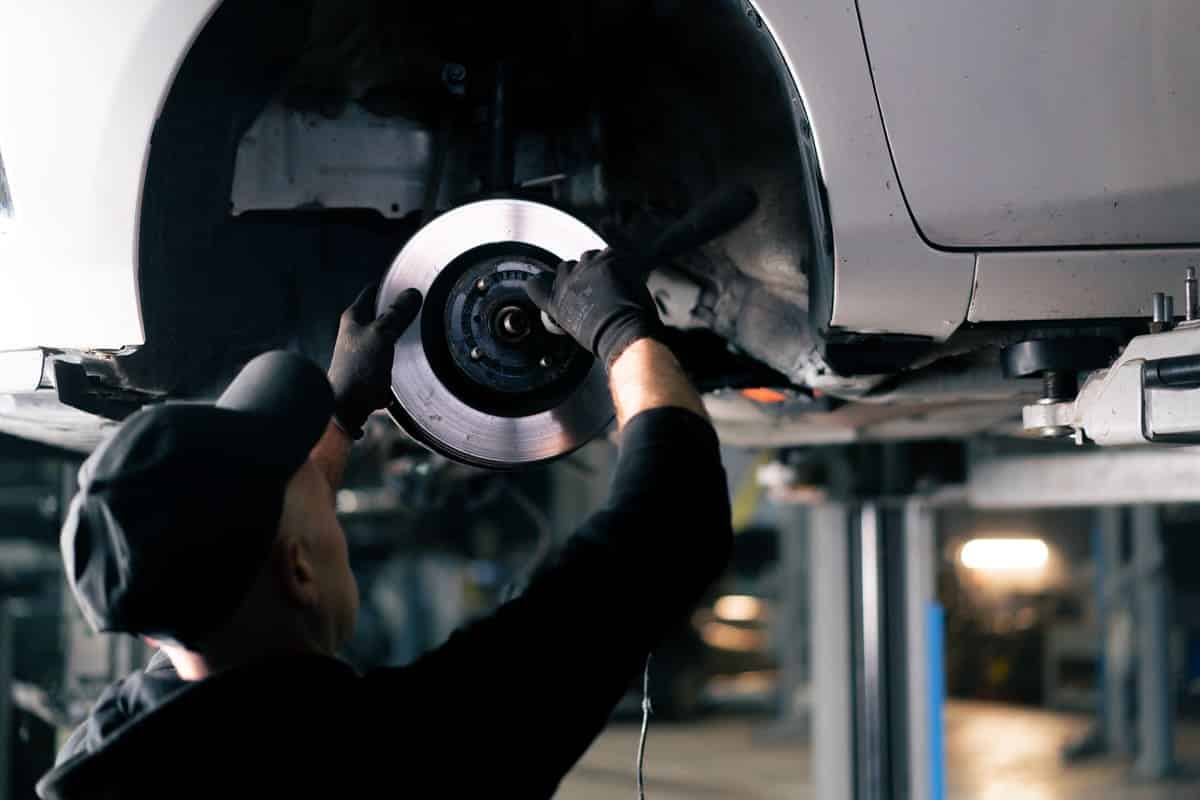
Sign #6: Pulling to One Side While Braking
If your car veers to one side when you brake, this often points to uneven brake wear or a problem with the brake calipers. When one side grips more tightly than the other, it creates an imbalance that can cause the car to pull toward the stronger brake, making steering difficult and driving unsafe.
How This Issue Worsens Over Time?
- Increased Tire Wear: A pulling brake can put extra strain on one side of your tires, leading to premature wear and costly replacements.
- Added Stress on : The uneven force can affect your suspension system, risking damage to other critical parts over time.
Benefits of Immediate Brake Inspection
- Enhanced Safety: Addressing the issue quickly ensures a balanced brake system, improving control and safety.
- : Early inspection can prevent minor brake issues from escalating into major mechanical problems, saving time and money.
If your car pulls to one side, have a mechanic inspect the brake system, as prompt action can restore even braking and reduce the risk of further damage.
Sign #7: Burning Smell While Driving
If you notice a burning smell while driving, especially when braking, it’s often a sign of overheating brakes or a stuck caliper. This odor can indicate that your brakes are working too hard or not releasing properly, leading to excessive friction and heat buildup.
Dangers of Overheating Brakes
- Increased Brake Wear: Consistent overheating can quickly wear down brake pads and rotors, reducing their lifespan and efficiency.
- Risk of Brake Failure: Overheated brakes are less effective and may even fail in extreme cases, posing a serious safety hazard.
How to Safely Cool Down Your Brakes?
- Pull Over: If you detect a burning smell, stop in a safe place and allow the brakes to cool down.
- Check for Visible Damage: Once they’ve cooled, inspect the brakes for visible issues like smoke, discoloration, or residue around the wheels.
What Are the Preventive Methods for Proper Brake Care?
Proactively caring for your brakes can extend their lifespan and . Consistent maintenance helps avoid sudden brake issues, keeping your vehicle safe and reliable.
Regular Brake Inspections
Routine brake inspections, every 10,000 miles or once a year, help catch problems early. Key components to inspect include:
- Pads, Rotors, and Calipers: These are prone to wear, and early detection prevents severe issues.
- Professional Checks: See a mechanic if you notice unusual sounds, vibrations, or other symptoms, ensuring safe and prompt repairs.
Proper Brake Pad Usage and Timely Replacement
Using quality brake pads designed for your vehicle can prevent premature wear. Here’s what to keep in mind:
- Replace Pads Promptly: Worn-down pads can damage rotors, so replace them before they get too thin.
- Monitor Pad Wear: Visually inspect pads or ask a mechanic to check wear levels, ensuring they stay in optimal condition.
Brake Fluid Maintenance
Maintaining proper brake fluid levels is essential for smooth, effective braking. Tips include:
- Replace Fluid Every 2 Years: Contaminants can reduce efficiency, so regular changes are crucial.
- Use the Correct Fluid: Refer to your for the right fluid type and follow safety tips for handling and replacement.
Avoiding Heavy Braking and Overloading
Gentle braking and avoiding excessive weight on your vehicle can reduce brake strain. Key practices:
- Gradual Braking: Especially in traffic, light braking helps minimize wear.
- Avoid Overloading: Excess weight can overheat brakes, so keep loads within recommended limits.
- Engine Braking: In manual vehicles, downshift on declines to reduce brake use.
Monitoring Driving Conditions and Adapting Braking Style
Road and weather conditions affect brake wear, so adjust your braking style as needed:
- Gentle Braking in Wet or Icy Conditions: This prevents skidding and extends brake health.
- Mindful Braking Habits: Adapting your style based on conditions offers long-term brake benefits and safer driving.
Incorporating these preventive methods into your routine can keep brakes in top shape, reducing unexpected repairs and enhancing safety on the road.
Conclusion
Keeping an eye on brake health and recognizing signs of wear can make all the difference in safety and cost. From unusual sounds to warning lights, these signs are early indicators that your brakes need attention.
Taking preventive steps, like routine inspections, timely replacements, and adapting driving habits, can extend the life of your brakes and prevent unexpected issues.
If any of these signs are present, it’s best to consult a trusted mechanic. Proactive brake care is a small investment for peace of mind and a safer driving experience.


